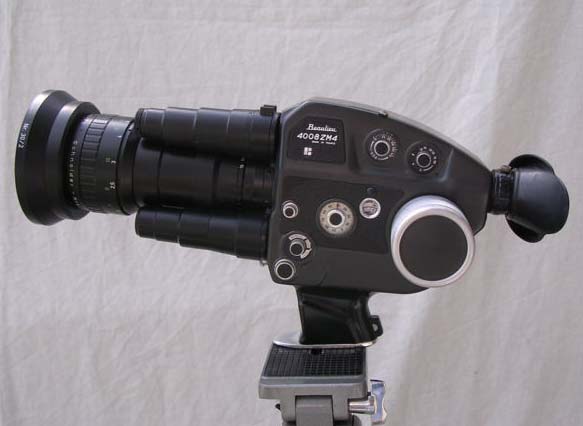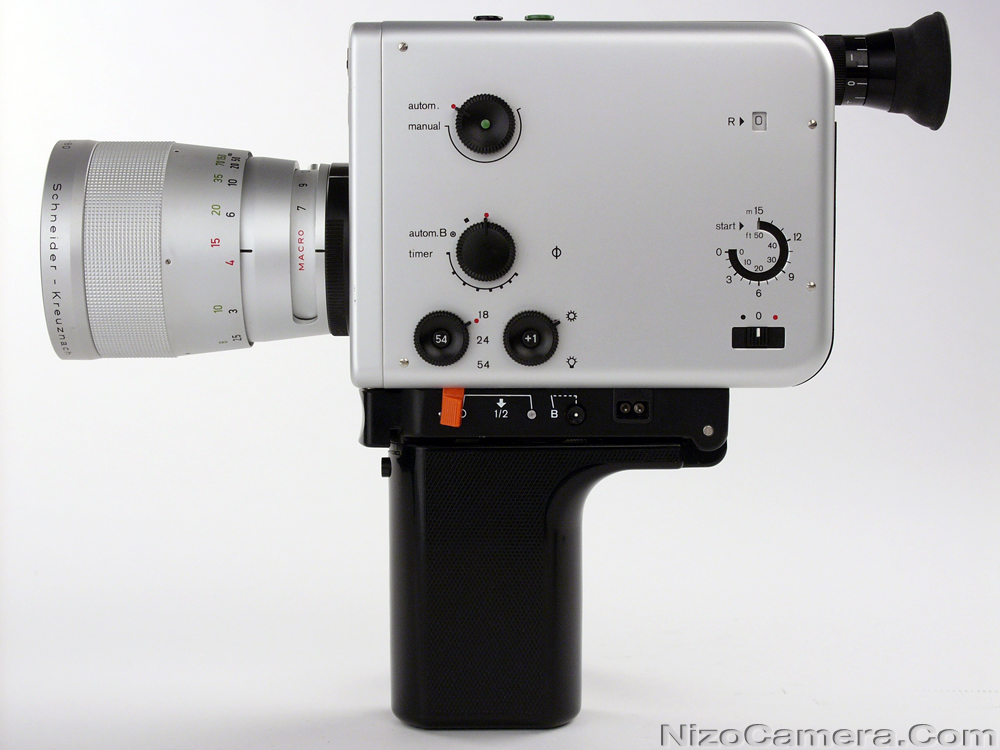Sometimes I find myself returning to film, wishing I still had my Bolex, Beaulieu or Nizo. Wonderful, mechanical, precision engineering you can hold in your hands.



The cost of film stock, processing and transfer to print or digital video is relatively expensive compared to digital video (approx. £70/3mins). However, artist films needn’t be long. Why not make films that are just a minute or two long?
Recently, while day-dreaming of Bolex Rex-5 cameras, I came across no.w.here, a critical film-maker’s haven, for laboratory facilities, telecine, and educational programmes. A wonderful looking past project brought Jonas Mekas to London to talk with young adults about “working with the diary film form as a cinema of free and poetic self-expression.”
It reminded me of a similar workshop I took part in at Image Forum, Tokyo, over two weeks in 1999. Each of us made a short film on 100 feet (2:45mins) of 16mm film. Mine was an exercise in film form, and a couple of years later the film ended up slotted into a longer film as shown below at 9:01 mins.
My workshop film is very simple. The camera remained static on a tripod and six different people took it in turns to stand in front of the camera. I started off by filming one frame of each of the six people as they rotated in front of the camera, and then two frames of each of them, and then three frames, and so on, up to 24 frames. The last time you see each person is for exactly one second or 24 frames. Or rather, it would be if you were watching the original projected film; the transfer to video changes the form temporally as well as materially. What should be exactly 75 seconds (1800 frames) becomes 72 seconds because PAL video runs at 25fps not 24fps. Given its entire purpose was to explore the exacting, mechanical and temporal attributes of film, its temporal form is technically destroyed when transferred to video.
It’s been over a decade since I worked with film, but I retain a strong attachment to small gauge (8, Super-8, 9.5 and 16mm) film and its social history. It can be the most beautiful and poetic of personal, artistic mediums. You may disagree, but have you seen films by Stan Brakhage, Peter Hutton, Nathaniel Dorsky or Jonas Mekas?
Take, for instance, Brakhage’s hand-painted films, or his more visceral ‘The Act of Seeing With One’s Own Eyes‘, or ‘Window Water Baby Moving‘, or this extract below from Mekas’ ‘Walden/Diaries, Notes and Sketches’.
To show you these films as video, streamed on the web, is to offer you the content disembodied from the form. It is a lie. We know what the film is about but we don’t know what it is to see. This is no more obvious with Peter Hutton’s ‘At Sea’, which may be watched below, but not seen.